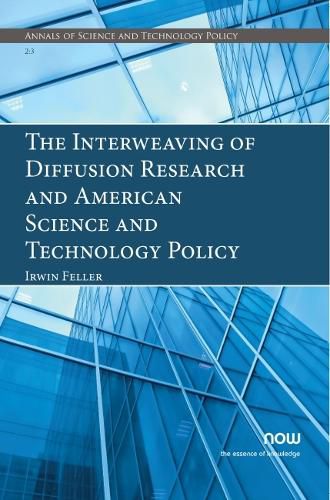Readings Newsletter
Become a Readings Member to make your shopping experience even easier.
Sign in or sign up for free!
You’re not far away from qualifying for FREE standard shipping within Australia
You’ve qualified for FREE standard shipping within Australia
The cart is loading…






This title is printed to order. This book may have been self-published. If so, we cannot guarantee the quality of the content. In the main most books will have gone through the editing process however some may not. We therefore suggest that you be aware of this before ordering this book. If in doubt check either the author or publisher’s details as we are unable to accept any returns unless they are faulty. Please contact us if you have any questions.
This monograph weaves together a history of theories of the diffusion of innovations in selected academic disciplines, tracing the influence of these theories in the formulation of national science and technology policies for 1960 to present. It moves along two main warps - disciplinary traditions of diffusion research and a synoptic history of U.S. science and technology policy - weaving them together at times and in places to demonstrate both their singular threads and crisscrossing patterns.
Given the monograph’s shifting focus back and forth between intellectual history and science and technology policy history over a 50+ year time period, it is useful to first set out the organization. Section 2 describes the concurrent rapid conceptual development and empirical testing in the 1960-1970s of models of diffusion of innovation in economics, geography, political science, and organizational theory that arose alongside but often in competition with prior
traditions of research
in (rural) sociology and anthropology, and the intra- and interdisciplinary battles over competing theories of diffusion for theoretical/disciplinary hegemony and policy relevance. Section 3 shifts from intellectual history to science and technology history. Section 4 describes the shifts beginning in the 1980s and continuing since then in policy agendas, conceptual models, and framing of U.S. science and technology policies and among OECD nations towards economic growth and competitiveness. Section 5 examines the re-emergence in assorted forms of academic interest and external funding in diffusion research circa 2000 to the present, also noting the current limited ties between this research and science and technology policy formulation.
$9.00 standard shipping within Australia
FREE standard shipping within Australia for orders over $100.00
Express & International shipping calculated at checkout
This title is printed to order. This book may have been self-published. If so, we cannot guarantee the quality of the content. In the main most books will have gone through the editing process however some may not. We therefore suggest that you be aware of this before ordering this book. If in doubt check either the author or publisher’s details as we are unable to accept any returns unless they are faulty. Please contact us if you have any questions.
This monograph weaves together a history of theories of the diffusion of innovations in selected academic disciplines, tracing the influence of these theories in the formulation of national science and technology policies for 1960 to present. It moves along two main warps - disciplinary traditions of diffusion research and a synoptic history of U.S. science and technology policy - weaving them together at times and in places to demonstrate both their singular threads and crisscrossing patterns.
Given the monograph’s shifting focus back and forth between intellectual history and science and technology policy history over a 50+ year time period, it is useful to first set out the organization. Section 2 describes the concurrent rapid conceptual development and empirical testing in the 1960-1970s of models of diffusion of innovation in economics, geography, political science, and organizational theory that arose alongside but often in competition with prior
traditions of research
in (rural) sociology and anthropology, and the intra- and interdisciplinary battles over competing theories of diffusion for theoretical/disciplinary hegemony and policy relevance. Section 3 shifts from intellectual history to science and technology history. Section 4 describes the shifts beginning in the 1980s and continuing since then in policy agendas, conceptual models, and framing of U.S. science and technology policies and among OECD nations towards economic growth and competitiveness. Section 5 examines the re-emergence in assorted forms of academic interest and external funding in diffusion research circa 2000 to the present, also noting the current limited ties between this research and science and technology policy formulation.